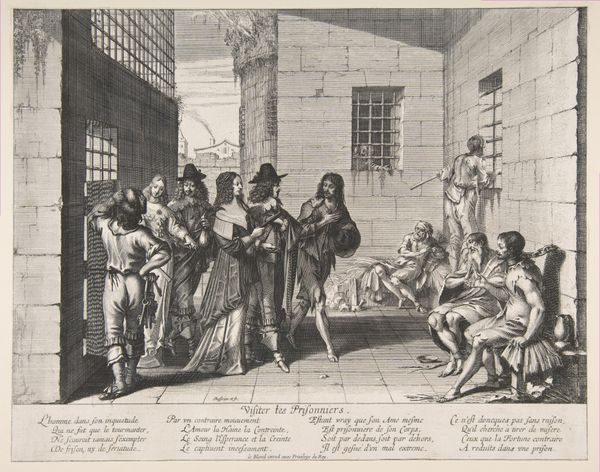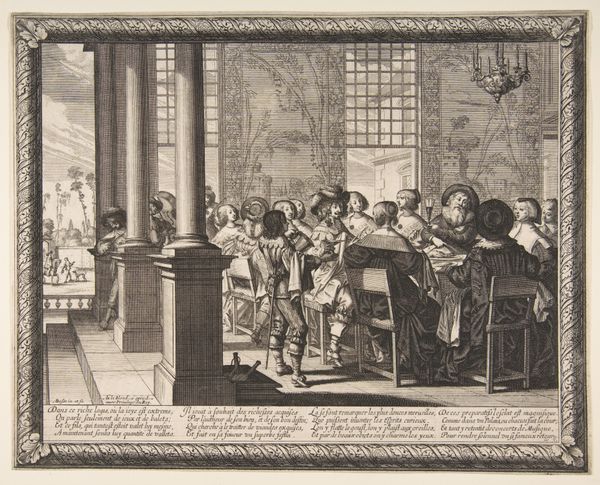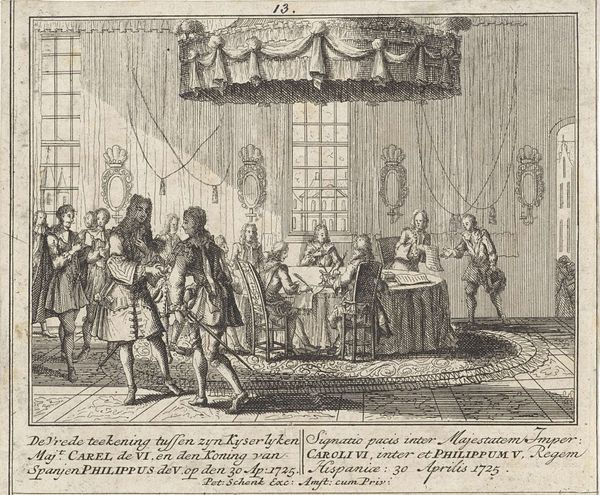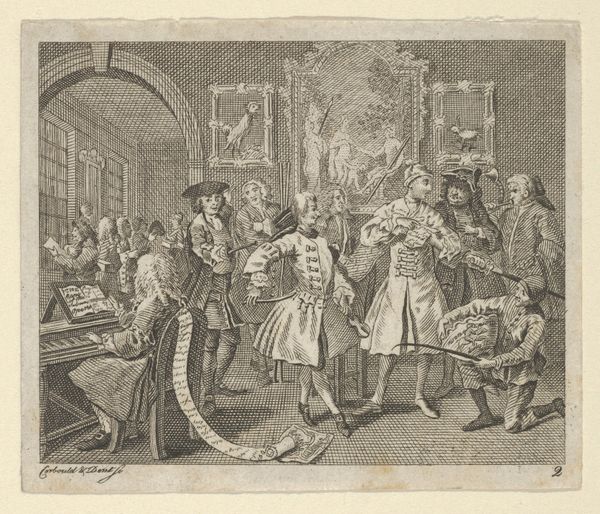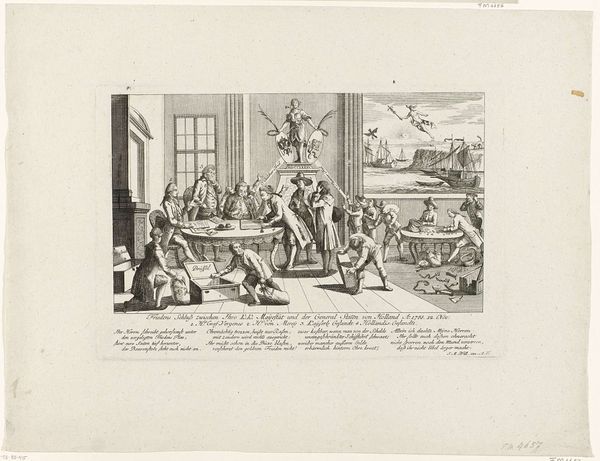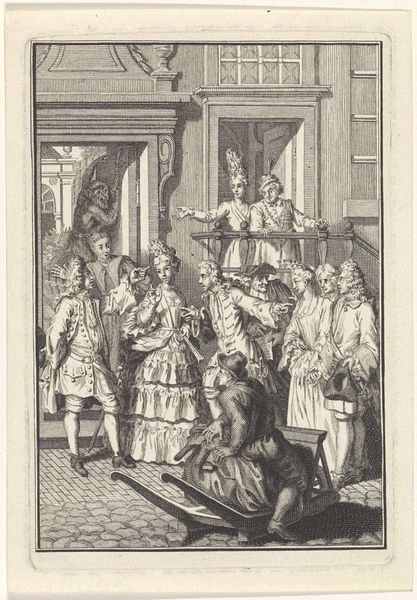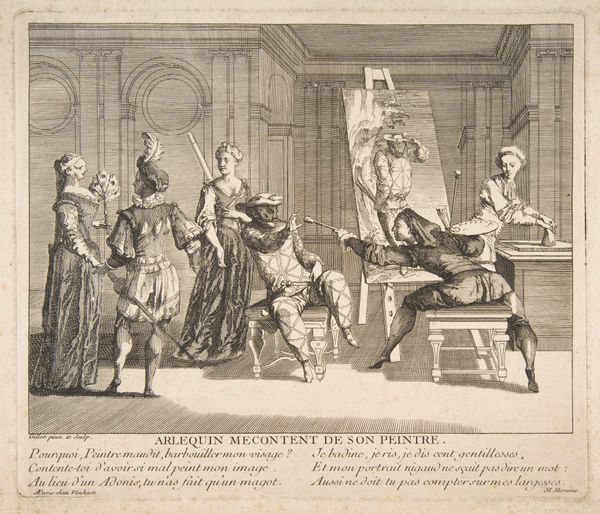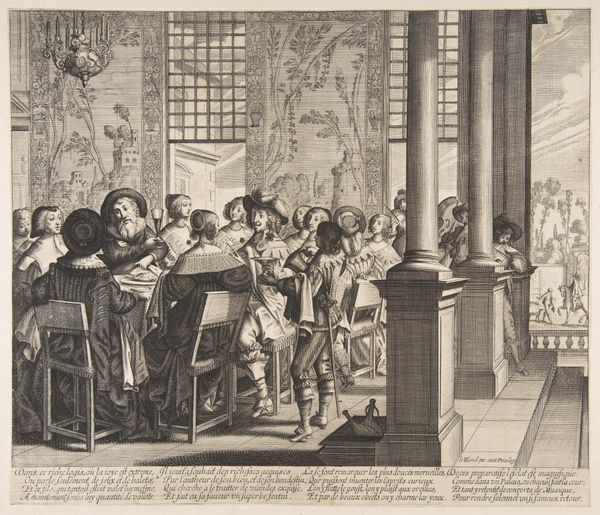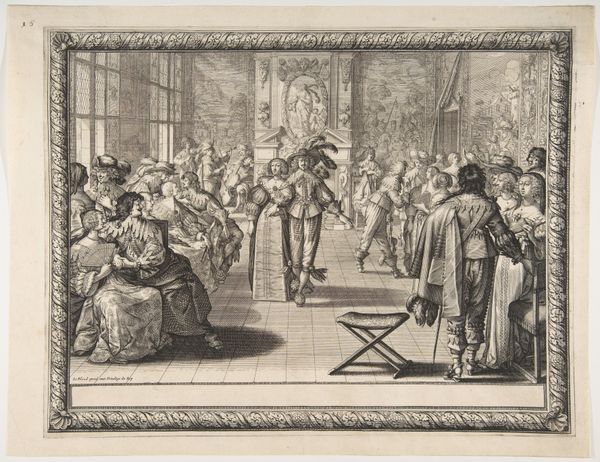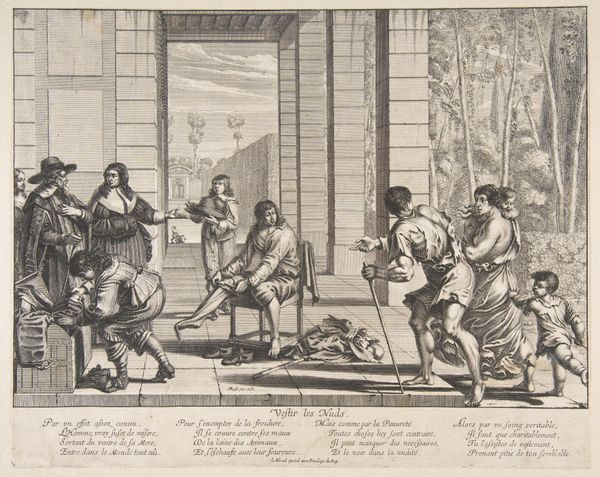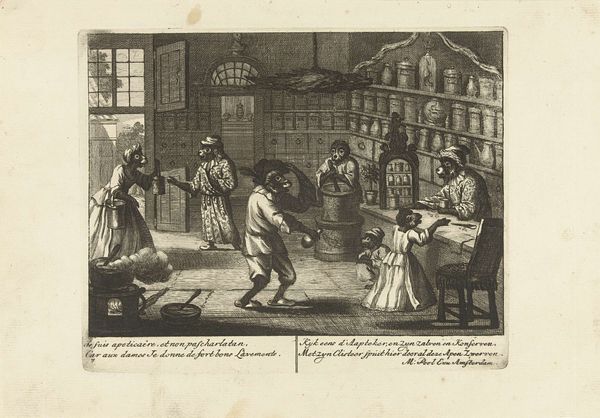
drawing, print
#
drawing
#
baroque
# print
#
men
#
genre-painting
Dimensions: Sheet (trimmed): 10 5/16 × 13 1/8 in. (26.2 × 33.4 cm)
Copyright: Public Domain
Curator: This is Abraham Bosse’s “The Banquet of the Rich Man,” dating roughly between 1630 and 1676. It’s a print currently held at the Metropolitan Museum of Art. My initial response is just how claustrophobic and judgmental this scene feels! The crisp lines and meticulous detail amplify the feeling of a world obsessed with status and appearances. Editor: Claustrophobic is an apt description, particularly given the process. As a print, likely an etching or engraving, Bosse’s work invites consideration of the printmaking process itself, reflecting an emphasis on mass production. The texture and linear quality resulting from the etching process speak to an efficient dissemination of commentary. Curator: Yes, the act of reproducing and distributing this image tells us so much about the cultural values it aimed to critique or uphold. The very publicness of a print speaks to the role art played in shaping social discourse at the time. Think about how easily such images could spread moralizing narratives. Editor: Absolutely, considering printmaking's crucial role in disseminating ideas within early modern society offers further context. It's difficult to miss how materials also enhance the socio-economic divide on display here: rich linens, fashionable attire, abundant foodstuffs for the diners compared to the apparent squalor just outside the room. The production and consumption displayed are really key. Curator: It’s a brutal depiction of indifference. Note the figure of Lazarus outside the banquet scene, visible through what looks like a doorway on the left side of the image. He's frail, almost skeletal, directly contrasting with the plump, self-satisfied figures inside, utterly consumed by their feast. Editor: And that placement highlights how these stark social contrasts are essential for interpreting this image’s message and underscores themes of judgment, charity, and consequence often debated during the Baroque period. I find the text running across the bottom to be particularly persuasive for directing interpretation! Curator: Indeed. Bosse’s composition frames this luxury as vulgar, even grotesque. Thinking about production, that the artist choose the print medium made it a powerful commentary for widespread engagement. Editor: Examining how Bosse used these printmaking techniques gives insight to how cultural norms of luxury are rendered, distributed and interpreted for the art audiences of the time. We leave our listeners now with Bosse's powerful social critique of indifference. Curator: Leaving us all a lingering sense of the social dynamics.
Comments
No comments
Be the first to comment and join the conversation on the ultimate creative platform.
